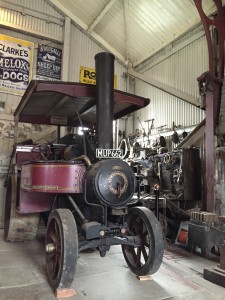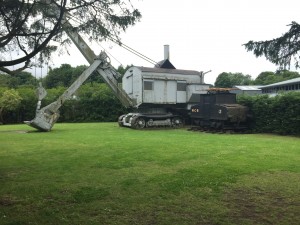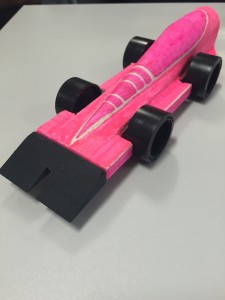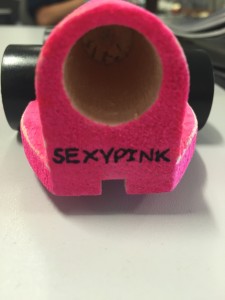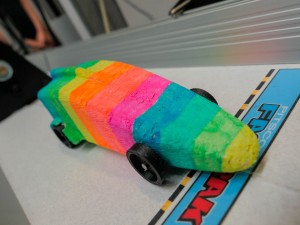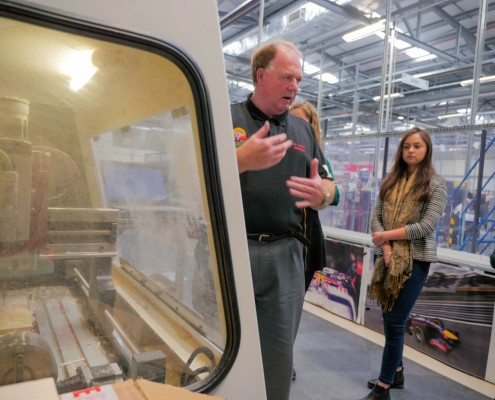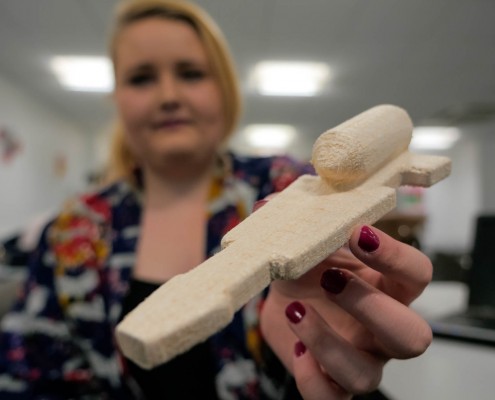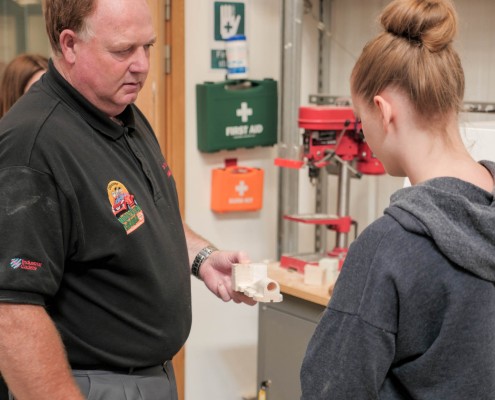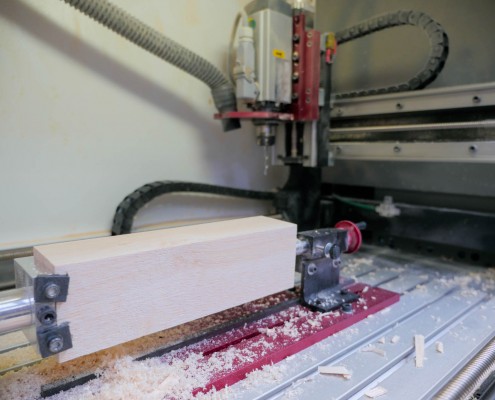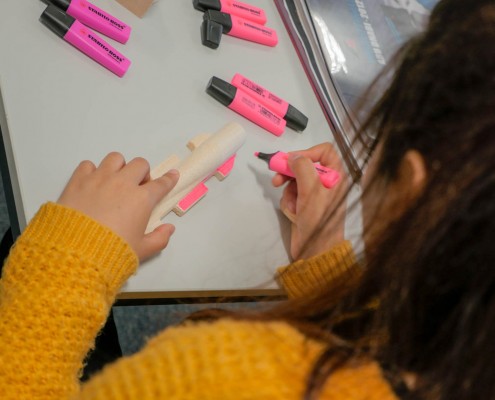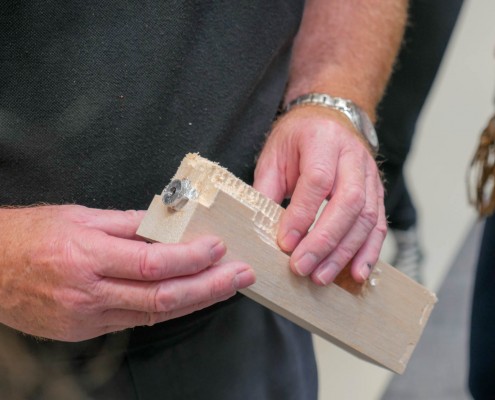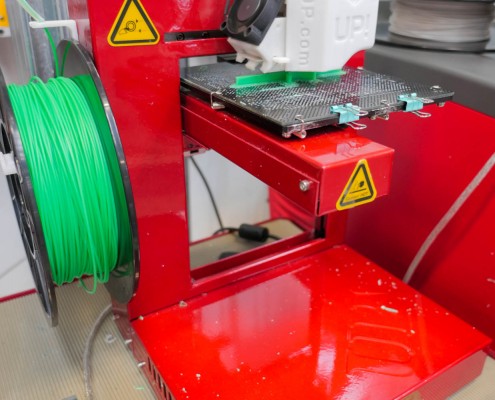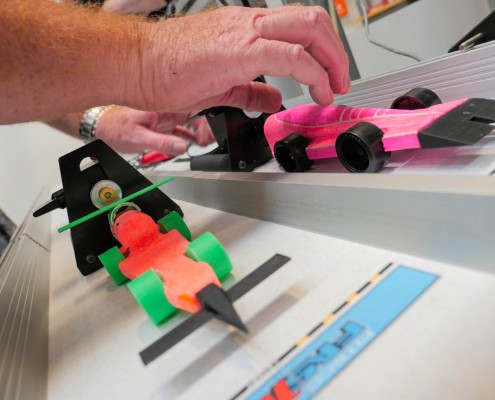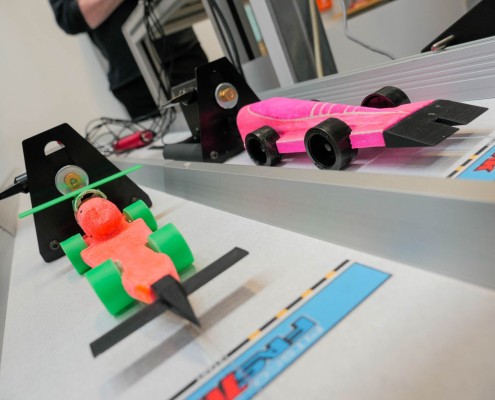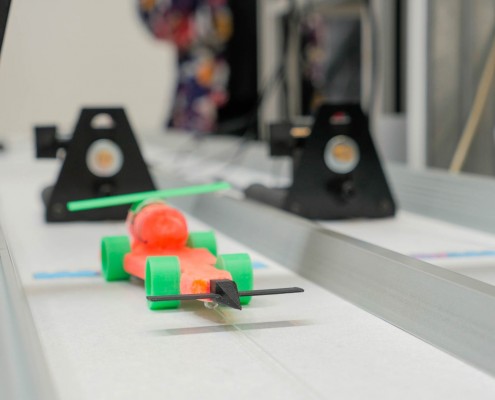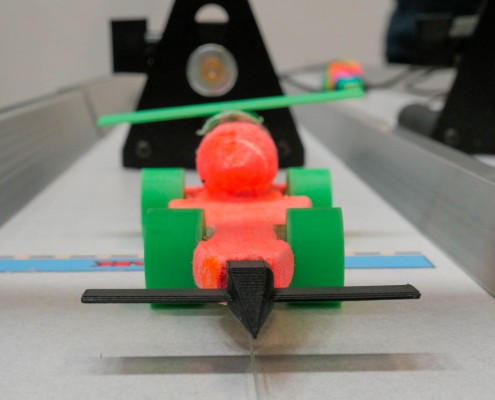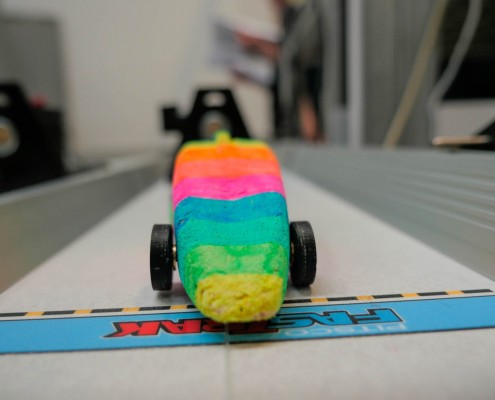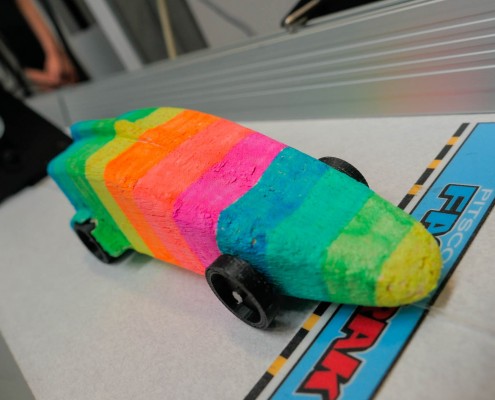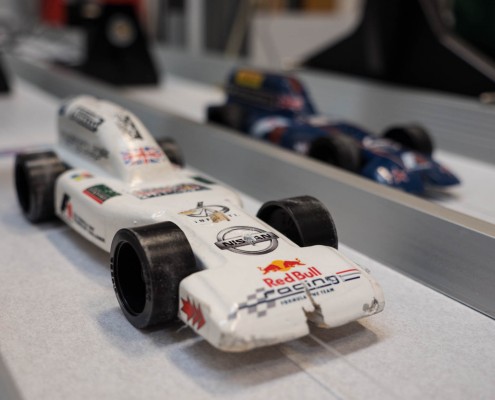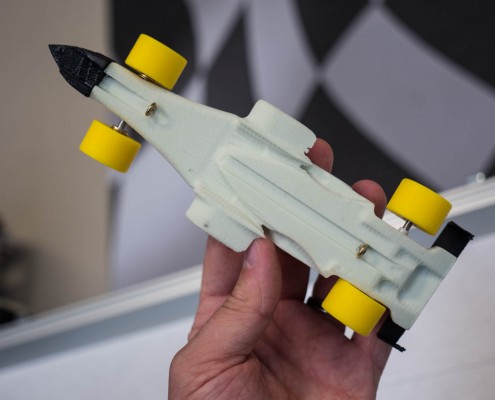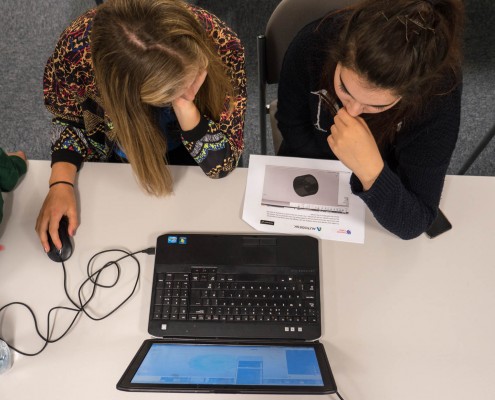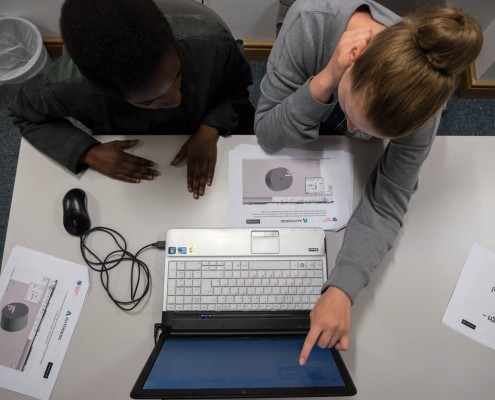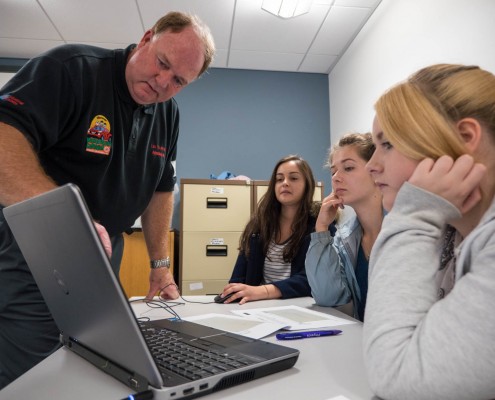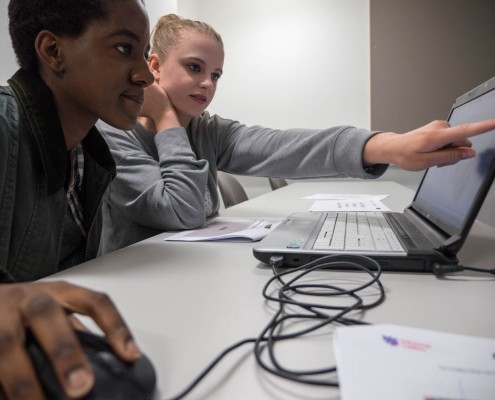Sophie – Week 1 of the Reece Summer School
July 13th, Day 1: The Beamish Museum.
- The tracks at Beamish
- A steamtrain
On Monday the group met in the Ellison Building in Northumbria University, before taking the bus to the Beamish Museum in Gateshead. When we arrived we met Simon and Holly, who are heads of learning at the museum. Simon explained how in the early 1900s, the area around Newcastle and Gateshead was a leading area for engineering, in particular in rail and steam trains. We learnt also how the area was a leading producer and exporter of coal, with up to around 150,000 miners employed in county Durham around 1920. It was interesting to learn how vital engineering had been to the region in the fairly recent past!
We visited the Colliery area first, and were told how a boiler was used to produce steam, which powered an engine that was used to move miners between the surface and underground. Steam power had replaced horses for this job, and meant that it became a cheaper and more efficient process, because instead of using space and labour caring for the horses, you could now have a machine to do the work of 2, 3, or 4 horses. It showed how engineering can improve processes, and lives. On the other hand, we also talked to a man who used to work in mines, and had seen the mines gradually be shut. He said that it was his heritage being destroyed; this made us think of how progress can leave people behind, and gave us an insight into how the pace of change is ever increasing. How will engineering have changed the world when we are older?
After visiting the Colliery, we went to the regional resource centre, where Simon gave a presentation on the history of rail in the area. He also showed us how engineers improved the safety of mines by improving the design of lamps used by the miners; underground, a lot of methane would build up, and since the Lamps were originally open flames, the flammable gas would lead to explosions. To prevent this, engineer Sir Humphry Davy developed the Davy Lamp, which had a gauze shell, which would draw the heat away from the flame, meaning the flame could not propagate out of the lamp. It was interesting to see this application of theory into an object which could help people in their everyday lives.
July 14th, Day 2: Nissan.
We visited the Gateshead Skills Academy on Tuesday, to have a 3 day introduction to the F1 challenge, in which you design and make a small car and race it against other cars. We learnt how to use the design programme “Autodesk Inventor”, and made the wheels and body of a car. This programme could be used to produce something that could be cut out, or even 3D printed.
In the afternoon we split into teams and started to design our car models, which we would actually build and race. The programme was quite easy to get used to and it was interesting to think about how it could be used to design things we could print in our homes, with the prospect of households owning 3D printers becoming a reality.
July 15th, Day 3: Nissan.
Today we finished working on our designs for our cars, and began making them. The main bodies of the car was made out of wood, and was carved out by a machine which used the design from Autodesk Inventor. The wheels and additional nose cones or fins were to be made by a 3D printer.
In the afternoon we went on a tour of the Nissan factory, which is across the road from the Gateshead Skills Academy. The factory is huge, and it was surprising to think I hadn’t known it was there. It is the only manufacturer of Nissan cars in the UK, and employees about 7,000 people, and produced around 500,000 cars in 2014.
We went around the assembly line of Nissan and saw how they used machines to put together all the parts of the car. It was interesting to see how these machines were making all the processes easier and more efficient, and it called back to what we had learnt in Beamish about steam power replacing horses. The whole workshop was very busy, but there were surprisingly few women, which highlighted to us the need to encourage more women into engineering!
July 16th, Day 4: Nissan.
This was the final day in Nissan, and we finished cutting out and printing all the parts of our cars. Once they were all put together and decorated, we put them on the track. A CO2 canister was put in the back to fire them down the track. Below is a picture of our team’s design, and videos of the cars going down the track. It was great to see something we’d designed and built working!
- Our team’s finished car!
- Our team’s car about to race anothers.
July 17th, Day 5: Nepal Research.
On Friday we started our research into the recent Nepal Earthquake. Over the remaining two weeks we are going to be researching this area and eventually producing a presentation on the disaster, and on what engineers could do to prevent another incident like this happening in the future. We ended the day by presenting what we had learnt so far in our research to the rest of the group. Below is a link to the powerpoint my group produced.
All in all it was a very interesting week, which gave us a great introduction to the possibilities of engineering in the north east.






